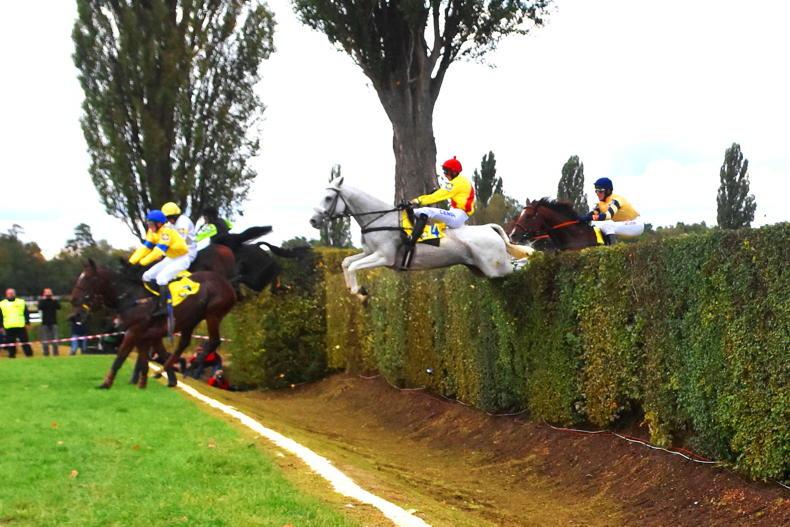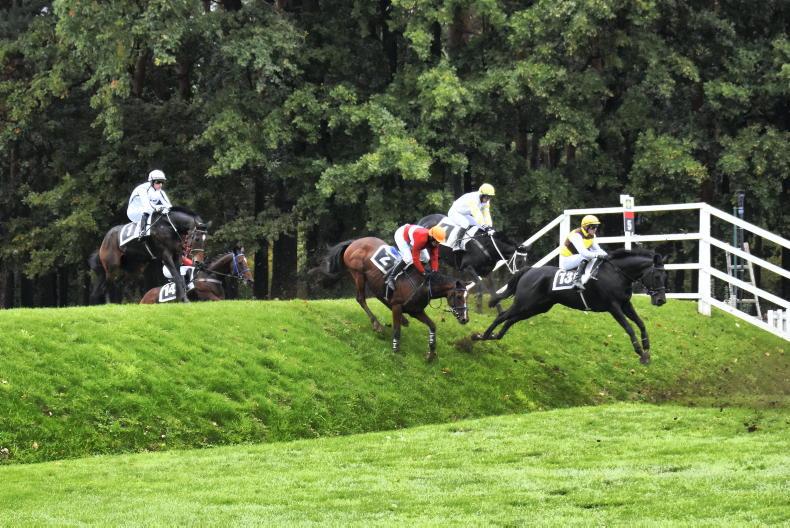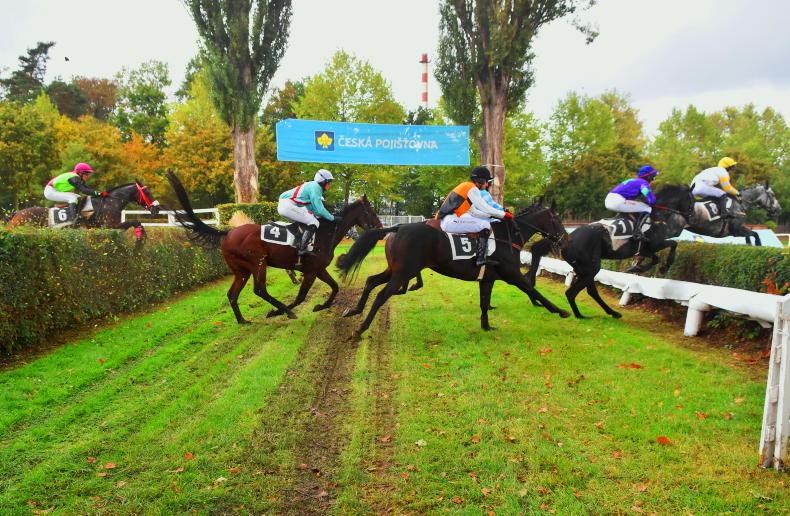WOMEN all over the world recently celebrated International Women’s Day which was held on March 8th, the theme of which was, ‘Gender equality today for a sustainable tomorrow’.
It is a time to remember all those trailblazing ladies who have made so much progress in driving for equality in sport, politics, and industry.
Think of the suffragettes like Maude Gonne McBride, Countess Constance Markievicz, Eva Gore-Booth, Sarah Persse, and the first lady master of a foxhound pack in Ireland, Edith Somerville from Co Cork, and her hunting second cousin Martin Ross (Violet Martin) from Co Galway, both suffragettes who published 35 books.
Their first book, An Irish Cousin (1889), they had to publish under a pseudonym as it was not generally accepted that women should publish books, but they got support from another female Irish author of the time, Maria Edgeworth. And more recent trailblazers, Mary Robinson, who hunted with the South Mayo Harriers as a child, succeeded by Mary McAleese, both of whom who served the country so well as President of Ireland.

Image of Lata Brandisova, first past the post in 1937 in the 'Devil's Race' - the Velka Pardubice
Steeplechasing
Ladies have given so much to hunting and to National Hunt Racing. The first recorded steeple to steeple race, between two church spires, gave National Hunt racing the name of steeplechasing. It was held between two foxhunters, Edmund Blake and Cornelius O’Callaghan, and took place in 1752 over five miles of cross-country for the prize of a cask of wine.
The Three Great Steeplechases
However since then, women have achieved many more milestones, including finally conquering all three of the world’s most famous steeplechase races, Britain’s Grand National, the Maryland Hunt Cup in America, and the Velka Pardubice in the Czech Republic.
Rachael Blackmore, who hunted with the Tipperary Foxhounds, won the Grand National in 2021. The Maryland Hunt Cup was won by Elizabeth McKnight (1986), who was a member of the Elkridge-Harford Hunt; Joy Slater (1980 and ‘81), Sanna Neilson (1991 and ‘93), Irish-born Ann Moran (‘90 and ‘97) and Blythe Millar Davies in (2011), all four hunt with Mr Stewart’s Cheshire Hounds.

Riders jumping the well known Taxis Ditch in the Velka Pardubice in the Czech Republic \ Noel Mullins
The Devil’s Race
Much has been written and rightly so about all these lady riders but probably the least well known is Countess Lata Brandisova who hunted with Count Octavian Kinsky’s Foxhounds, and she is the subject of this story. She is the only lady to ride the winner of the gruelling Velka Pardubice in the Czech Republic, in 1937.
Some time ago I had the pleasure of visiting the Czech Republic with former jockey Paul Kinane and his wife Amy to attend one of the most famous steeplechases in the world, known as the ‘Devil’s Race’. Many rank it above the Grand National and the Maryland Hunt Cup.
The second race on the card caught my attention as it was in memory of Lata Brandisova. But who was this lady?
Well she was probably the most famous lady rider in the world of her era, and her talents were honed in the hunting field.
Foxhunting was introduced to Bohemia in the Czech Republic in 1820 by Count Oktavian Kinsky. But when Adolf Hitler, apparently a vegetarian, became Chancellor of Germany in 1933, he invaded the then Czechoslovakia in 1939 and had already banned field sports, particularly hunting live quarry with hounds as he considered it offended the German people.
When I visited the Czech Republic with Aidan ‘Suntan’ O’Connell for a hunting weekend at his friend Prince Johannes Lobkowicz’s large estate with the Asbach Hounds, they were still drag hunting.

Riders negotiate The Irish Bank on the Velka Pardubice Steeplechase course \ Noel Mullins
The Pardubice Velka Steeplechase
But back to the Pardubice Steeplechase, which is run on the second Sunday of October over four miles, two furlongs. The 31 fences are over a twisty course of grass and plough with signature fences like The Irish Bank, the Small Garden which is a railed hedge with just two strides across a road, the Snake Ditch, Popler’s Jump named after Rudolf Popler who was killed there in 1932, and the Great Taxis Ditch which is a huge hedge and a never-ending drop, fortunately only jumped once in the race.
Josef Vana is the local hero as he rode eight winners from 28 attempts and trained 10. His son Josef Jnr, a champion jockey, has yet to win it, but has come close on many occasions.
The race has been won by the British event rider, Chris Collins on the Irish-bred Stephen’s Society in 1973, and by Charlie Mann on another Irish-bred, Just a Snip, in 1995.
The racing journalist and winner of the 1990 Grand National, Marcus Armitage, survived 1990 and 1991 but crashed out in 1992, describing the race as being ‘The Chair (Aintree) on steroids’. He eventually decided to quit when he said he saw the light, in fact the blue lights of the ambulance taking him to hospital!
Irish jockeys Ruby Walsh, Ken Whelan, Patrick Mullins and Paul Carberry rode in the race a number of times. The Irish hunter chase supremo trainer Enda Bolger has sent a few horses over including Risk Of Thunder, ridden by British champion jockey Richard Dunwoody, but to no avail, which just goes to show what a massive challenge it presents.

Up and over: The Garden and Double Rails with hedges in the Velka Pardubice Steeplechase \ Noel Mullins
Lata Brandisova
In the history of the race, only one lady has won it and her name was Countess Mary Immaculata (Lata) Brandisova. Her cousin, Count Karel Kinsky, owned and rode Zoedone to win the 1883 Grand National. Interestingly there is an Irish connection, as a member of the Count’s family, Ferdinand Bonaventure Kinsky was in Sisi, the Empress of Austria’s party, when she visited Ireland to hunt with the Ward Union, Kildare and Meath Hounds in 1874.
After the First World War, racing commenced in Czechoslovakia and horse trainer Karel Smejda agreed to help Lata achieve her dream of winning the Pardubice.
But there was uproar amongst the all-male jockeys who were mainly cavalry officers, many had seen military action and were decorated in WWI. They protested that the race was a test of manhood and too demanding for ladies.
Furthermore, they claimed that it would rival an officer’s honour, and if Lata was to get amongst the placings that they would be ridiculed. They filed their protest with the Czechoslovakian Jockey Club. However, her cousin Count Radslav (Ra) Kinsky, who was chairman, cleverly referred the matter to the English Jockey Club for their opinion. They stated that they would have no objection as long as Lata had her own changing room!
She kept her horses fit hunting with the Kinsky Foxhounds, and as a mode of transport. Count Radslav Kinsky owned a large stable of horses for hunting, racing and breeding at his home in Orlik and his hunting lodge at Obora.
From 1836 the family had bred the much sought after Kinsky warmblood horses from old Spanish and Italian breeding that had a distinctive golden colour, originating from a cream dilution gene. It was said that these horses shone like molten gold.
In 1921, Lata began riding successfully in flat races, and both Count Zdenko Kinsky and Ra encouraged her to seriously start training for the Pardubice. So Lata set about practising on Ra’s private course in Kolesa where he had built a replica of the Pardubice course.
Her first Pardubice was on October 9th 1927, amidst multiple objections from male riders who did not want ladies encroaching on their territory. Riding Nevestam, she carried the Kinsky colours of red and white vertical stripes with red and white quartered cap. Lata fell at Taxis but remounted and finished fifth after a further two falls.
European unrest
The 1930s was a time of great political unrest as Hitler was intent on taking over the Sudetenland, the German-speaking part of Czechoslovakia. Lata rode Kinsky’s seven-year-old stallion Norbert. There were eight Czech riders in the race and Lata fell at the Little Taxis but remounted and finished fourth.
In 1931, the course was waterlogged but the race went ahead. There was a course pile up at the Taxis, but Lata escaped, so with only four survivors, Lata fell twice and remounted to finish fourth again. In 1932, she watched from the stands. Jan Popler was second but died in the next race from a heart attack.
In 1933, Adolf Hitler became Chancellor of Germany and between economic problems in Czechoslovakia and jobless figures rising, part of her family estate was confiscated under land reform. Despite the turmoil, Lata came third in the Pardubice on Ra’s Kinsky mare Norma who bore the unique Kinsky breeding markings of blond mane and tail with the golden Isabella body colouring and four white socks. She was by a thoroughbred sire and her dam was from Hutsul bloodlines from what is now sadly war-torn Ukraine.
In 1934, politics began to play a more progressive role when Hitler decreed that all German Riding Associations join one of the two German paramilitary wings. Some riders were executed for not joining in the Dachau region.
Lata, now 38 years of age, was third on the six-year-old mare Norma. In 1935 riding Norma, she fell at the Taxis when brought down by a loose horse, but remounted and went into the lead, but too soon and Norma got tired. However, she finished second on her sixth time to ride in the Pardubice.
At the 1936 Olympic Games in Berlin, German riders won all equestrian events with three individual gold and three team gold medals. A hole on landing in the water in the eventing course caused problems, but not for the German riders as they knew the line to avoid it.
Czech nobility were forced to align with the Third Reich but Lata was loyal to Czechoslovakia. After the German riders performance in the Olympics, SS Officers were full of confidence and the Pardubice was won by SS Officer Oskar Lengnik on Herold with D Pogliagu, who was given the ride on Norma, in fourth place.
Lata’s year of triumph
In 1937, President Tomas Masaryk, a horse lover, known as ‘the father of the nation’, died. The country went into mourning and two million people attended his funeral. Meanwhile, concentration camps were being built in Germany. Third Reich cavalry officers started to arrive in October in Pardubice for the 56th Grand Pardubice big race.
Ra said he was considering breeding Norma, which disappointed Lata, but he changed his mind although saw no chance of Lata succeeding with the strength in the field. Nevertheless, Lata started hill training in the Bohemian Hills and over Ra’s replica Pardubice fences.
On Sunday, October 17th 1937, Countess Lata Brandisova and Norma were late entries on her seventh attempt in the race. Diplomats and nobility arrived for the showpiece, including film crews and people gathered around radios, while special trains were laid on.
Lata was not given any chance. There were 15 runners and this was the strongest opposition that Lata had faced with crack German SS officers, East Prussian and Italian Fascist officers dominating the entries even though Germany was preparing for war.
Holy Medals
They objected to Lata riding in the race and the course was modified to make it even more challenging. Lata wore her Virgin Mary medal and Saint Anthony medals in her helmet. At the start Lata avoided the charge over the first three fences and settled at the back for the Taxis fence which they took in their stride and avoided all the fallers. The favourite Herod fell but his rider remounted as they crossed the Irish Bank and then the sharp right hand to Popkovice Corner and around the wood where they went out of view.
Exiting the woods, Lata and Norma were lying in fifth place. Coming around by the stands, Lata was fourth as she picked her own line at an easy pace so as not to take too much out of the mare. As they crossed the ploughed section, there were more casualties at the Snake Ditch and the water ditches as they circled back towards Popkovice Corner again. By now Lata and Norma were lying in second place, led by Willibald Schlagbaum and Quixie, who intentionally bumped Lata to put her off, but it did not work. At the second last, Schlagbaum cut her off again as she tried to go to the front, but it only served to put him off his running line.
Lata saw her opportunity to try again before the last fence to take him on the inside and coasted across the finishing line winning by an impressive seven lengths to an ecstatic crowd of spectators.
Owner Ra Kinsky, trainer Karel Smejdaand and groom Josef Soukup rushed to the finish. Soukup, in anticipation of winning, had made up a white ‘V for Victory’ sash that he wore proudly around his neck as he proudly led the history-making duo of Lata and Norma to the winner’s enclosure, the first lady – and still the only lady – to win the famous race. It was an emotional welcome with the crowd chanting ‘Norma, Norma’ over and over again.
Whole villages came out to greet her and the headlines read, ‘Victory for women’ and ‘Czech victory’. But shortly afterwards in 1938, Germany invaded Austria and Czechoslovakia was next resulting in Europe at full scale war by 1939.
Lata died in 1981 in her cousin’s home in Austria but her name will go down in the annals of racing history as the first and still the only lady to win the ‘Devil’s Race’, the most dangerous race in the entire steeplechase world, the Velka Pardubice.


 This is a subscriber-only article
This is a subscriber-only article
 It looks like you're browsing in private mode
It looks like you're browsing in private mode









SHARING OPTIONS: